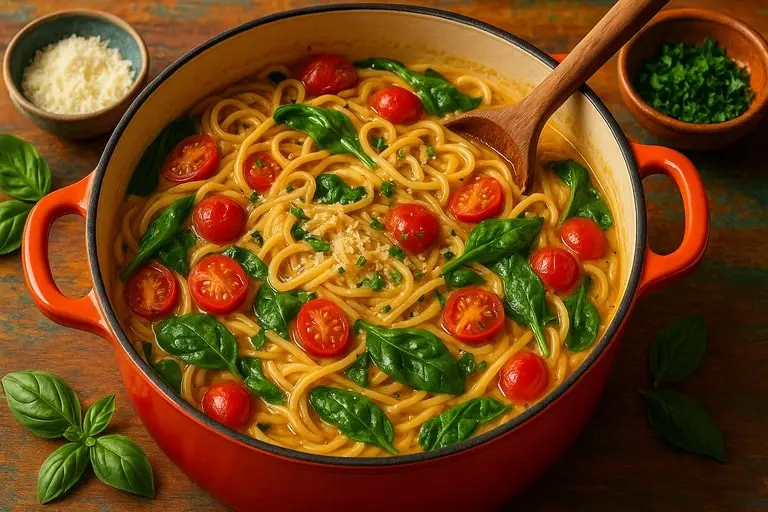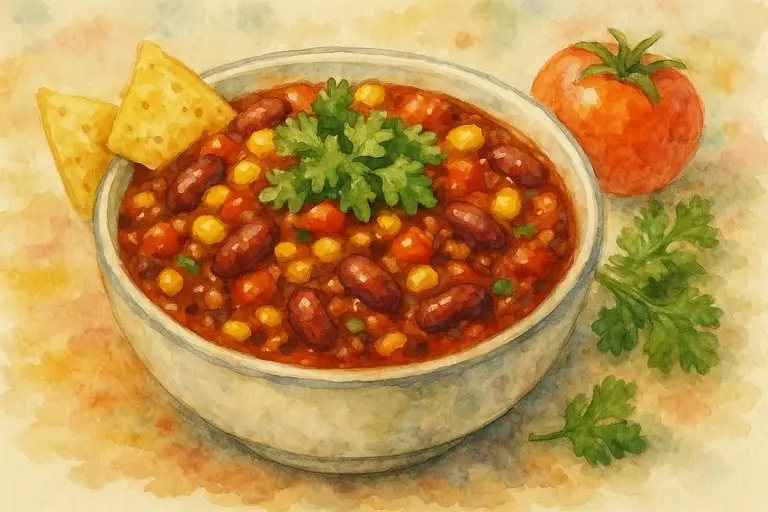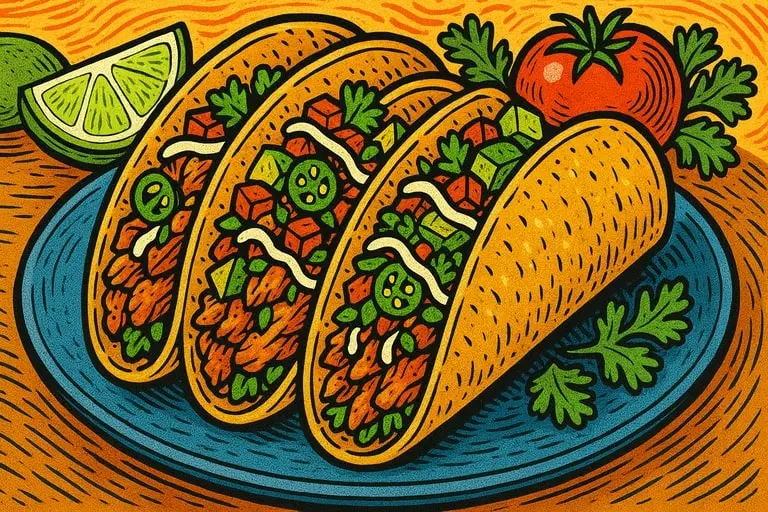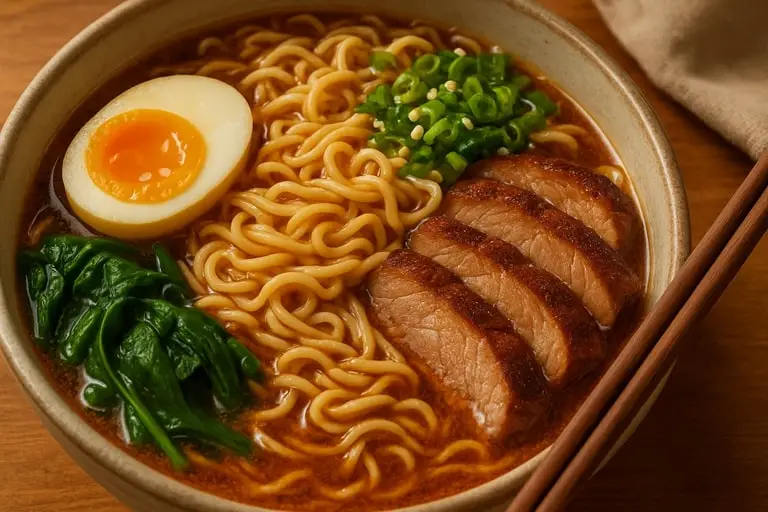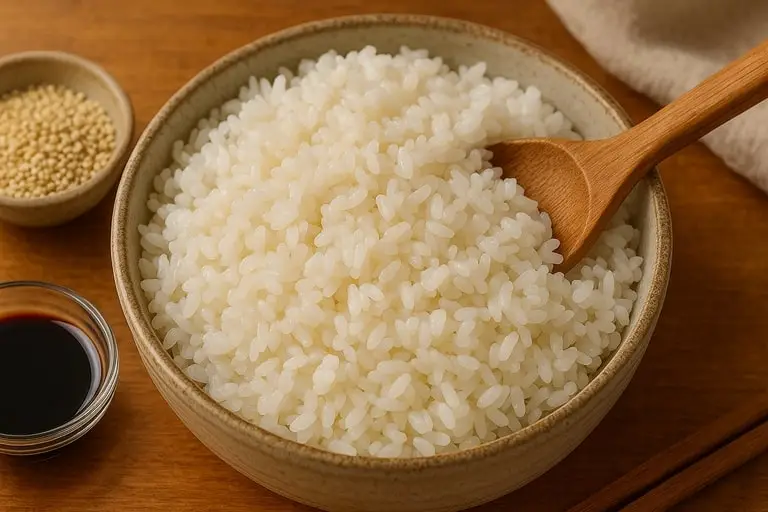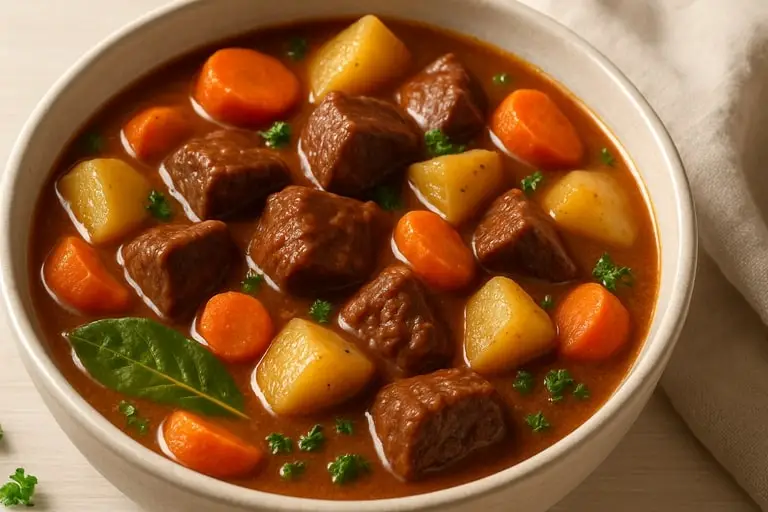One pot pasta has emerged as a revolutionary approach to home cooking, praised for its efficiency, flavor, and minimal cleanup. At first glance, the concept seems almost counterintuitive to traditional Italian practices, where pasta and sauce are prepared separately, each requiring its own pot and precise timing. Yet the one pot pasta method demonstrates that culinary traditions evolve by adapting to modern lifestyles, offering solutions that blend authenticity with convenience. In this technique, pasta, sauce, and aromatics cook together in a single vessel, allowing starches from the pasta to thicken the sauce naturally and infuse the dish with cohesion that feels both rustic and refined.
The origins of one pot pasta as a defined method can be traced to chefs and innovators seeking to simplify weeknight meals without compromising quality. Its rise in popularity owes much to the balance it strikes: reducing steps while amplifying flavor. By cooking pasta in broth or seasoned water alongside vegetables and proteins, layers of taste meld seamlessly, producing results that rival more labor-intensive recipes. This democratization of pasta cooking empowers even novice cooks to produce impressive results, reinforcing the notion that great flavor does not always require complexity.
Flavor integration distinguishes one pot pasta from traditional approaches. In conventional boiling, much of the pasta’s starch drains away with discarded water. In one pot pasta, those starches remain, creating a natural binding agent that thickens sauce and coats noodles luxuriously. Tomatoes simmer with garlic and herbs directly beside pasta strands, while olive oil emulsifies into the sauce. The result is not a combination of separate elements but a single, unified dish where every bite harmonizes.
Texture is equally important. Because pasta absorbs liquid as it cooks, careful attention ensures noodles remain al dente while sauce develops body. This balance requires managing heat and timing with precision, reminding cooks that simplicity does not equate to thoughtlessness. Done properly, one pot pasta achieves a creamy, cohesive texture that feels indulgent while remaining streamlined in preparation.
Nutritionally, one pot pasta reflects versatility. By incorporating vegetables, lean proteins, or legumes directly into the pot, cooks elevate the meal from simple starch to balanced dish. Broths enriched with spices or herbs provide depth without excess fat, while olive oil or cheese contribute richness in moderation. This adaptability makes one pot pasta suitable for varied diets, from vegetarian to protein-focused, aligning with contemporary wellness trends.
The cultural significance of one pot pasta lies in its accessibility. While Italian cuisine has long celebrated pasta as a symbol of tradition and artistry, the one pot method embraces modern demands for efficiency without dismissing heritage. It reflects how food cultures evolve: respecting roots while meeting the realities of time-strapped households. In this sense, one pot pasta serves as a bridge between authenticity and practicality, proving that innovation does not diminish tradition but keeps it alive.
The sensory experience of one pot pasta deepens its appeal. Aromas of garlic sizzling in olive oil, tomatoes breaking down into sauce, and herbs releasing fragrance create anticipation long before the dish is finished. Visually, the glossy noodles entwined with vegetables and proteins form a vibrant tableau, inviting diners to appreciate both aesthetics and taste. The act of stirring and tasting as the dish develops connects cook and food in a way that feels both intimate and rewarding.
Professional chefs recognize one pot pasta as both challenge and opportunity. On one hand, purists may view it as departure from classical methods; on the other, it offers a platform for creativity. Fine dining kitchens experiment with elevated versions, integrating premium ingredients like saffron broth or truffle oil, proving that simplicity does not exclude sophistication. This flexibility reinforces its legitimacy as a culinary technique rather than a shortcut.
Home cooks especially benefit from the reduced cleanup. In busy households, the prospect of multiple pots, pans, and strainers deters from cooking, pushing many toward takeout. One pot pasta eliminates this barrier, making home-cooked meals more attainable. Its minimal equipment requirements also make it accessible in smaller kitchens, student apartments, or even camping setups, underscoring its global adaptability.
Ultimately, one pot pasta represents the essence of culinary simplicity: a dish that reduces steps while amplifying satisfaction. It proves that efficiency and flavor can coexist, offering nourishment not only for the body but for the rhythm of daily life. Through its balance of tradition and innovation, one pot pasta has secured its place as a staple of modern cooking.
One Pot Pasta Recipe Essentials
Perfecting a one pot pasta recipe requires more than simply tossing ingredients into a pot—it demands awareness of how liquid, heat, and timing interact to create harmony. The essentials of this method demonstrate that success lies in balance, where each component plays a role in developing a dish that is greater than the sum of its parts.
Liquid forms the backbone of every one pot pasta recipe. Unlike traditional methods where water is discarded, the liquid here remains, absorbed by noodles and transformed into sauce. The choice of liquid—vegetable broth, chicken stock, or even tomato juice—defines the base flavor. Careful measurement ensures enough to cook pasta fully while avoiding excess that dilutes the sauce. This controlled absorption exemplifies the science behind the method.
Aromatics provide the foundation for flavor. Garlic, onions, or shallots, sautéed briefly before adding liquid, release essential oils that permeate the dish. Herbs such as basil, oregano, or thyme infuse as they simmer, deepening complexity. Unlike sauces prepared separately, these elements remain in contact with pasta throughout cooking, ensuring flavor integration rather than layering.
Timing emerges as the most critical variable. Proteins, whether chicken strips, shrimp, or beans, must be added at stages that ensure thorough cooking without overcooking. Vegetables with different densities—zucchini, carrots, spinach—enter at staggered times to preserve texture and color. Mastery lies in synchronizing these additions so that all components reach peak doneness together.
Texture refinement distinguishes ordinary from extraordinary. Stirring regularly prevents pasta from sticking and ensures even cooking. Adjusting heat maintains simmer without reducing liquid too rapidly. Toward the end, a drizzle of olive oil or sprinkle of cheese creates emulsification, binding sauce and noodles into creamy cohesion. These details reveal that even simplicity requires attentiveness.
The adaptability of one pot pasta recipes contributes to their popularity. Variations abound: Mediterranean versions with olives and feta, Asian-inspired dishes with soy and ginger, or rustic interpretations with sausage and kale. Each reflects local flavors while adhering to the principle of unity in a single pot. This versatility makes one pot pasta not a single recipe but a method that accommodates endless reinterpretations.
From a nutritional standpoint, one pot pasta recipes offer balance. Incorporating lean proteins and abundant vegetables transforms pasta into a complete meal, reducing reliance on side dishes. Broth-based versions emphasize lightness, while cream or cheese enrichments provide indulgence. This flexibility aligns with dietary diversity, making one pot pasta suitable across preferences and occasions.
Professional kitchens approach one pot pasta with both skepticism and admiration. While classical training emphasizes separate preparation, many chefs appreciate the efficiency and creativity the method offers. By refining ratios and techniques, they elevate the concept into restaurant-worthy dishes, challenging perceptions that one pot pasta belongs only to home kitchens.
Culturally, the recipe embodies adaptation. Italian tradition may not have invented the concept, but its spirit of pasta innovation resonates within it. By reimagining how pasta can be prepared, one pot pasta recipes reflect broader culinary movements toward inclusivity and practicality, proving that tradition evolves by embracing change.
The emotional appeal of one pot pasta recipes deserves recognition. Their ease lowers barriers to cooking, encouraging families to gather around homemade meals even on busy nights. Sharing a dish that emerges from a single pot reinforces connection, symbolizing unity both in preparation and experience. This communal aspect elevates one pot pasta beyond convenience into tradition.
Ultimately, the essentials of one pot pasta recipes reveal that mastery lies not in complexity but in harmony. By balancing liquid, timing, and flavor integration, cooks transform simple ingredients into meals that feel complete and satisfying. This mastery demonstrates that simplicity, when executed with care, becomes artistry.
One Pot Pasta and Everyday Comfort
The role of one pot pasta in everyday comfort highlights how food sustains not only the body but also the rhythm of life. Beyond flavor and convenience, it embodies reassurance, familiarity, and adaptability, becoming a dish that reflects both modern demands and timeless human desires for nourishment and ease.
In households worldwide, one pot pasta has become synonymous with weekday relief. Its preparation requires minimal planning, often relying on pantry staples—dried pasta, canned tomatoes, herbs, and a bit of oil. This accessibility ensures that even when time is scarce, a nourishing meal emerges with little effort. The predictability of outcome provides comfort, reducing stress and uncertainty at the end of demanding days.
The aroma of simmering one pot pasta contributes significantly to its appeal. Garlic mingling with tomato, herbs releasing fragrance, and pasta softening in broth create an olfactory experience that signals home and care. This sensory element reinforces the dish’s emotional resonance, where anticipation builds long before the first bite.
One pot pasta also functions as a canvas for improvisation. Leftover vegetables, scraps of cheese, or bits of protein integrate seamlessly, reducing waste while creating variety. This adaptability transforms limitations into creativity, proving that comfort food often arises from resourcefulness. Each variation reflects the cook’s circumstances, making one pot pasta deeply personal.
Culturally, one pot pasta echoes traditions of communal eating. While Italian kitchens emphasize pasta with carefully crafted sauces, the one pot method resonates with global traditions of stews and casseroles, where ingredients cook together to form cohesive wholes. This connection situates one pot pasta within a broader lineage of comfort foods that embody togetherness and practicality.
Nutritionally, one pot pasta provides balance when crafted thoughtfully. Vegetables contribute fiber and vitamins, proteins sustain energy, and pasta supplies carbohydrates for fuel. This integration ensures that comfort does not equate to indulgence alone but also delivers nourishment, aligning with the body’s needs as well as the spirit’s.
The dish also reflects broader lifestyle shifts. As work, family, and social demands intensify, home cooks seek meals that reconcile quality with efficiency. One pot pasta satisfies this demand, proving that even under pressure, food can remain wholesome and joyful. In this way, it symbolizes adaptation to modern rhythms without relinquishing the pleasures of dining.
Psychologically, one pot pasta carries symbolic weight. It reassures cooks that effort need not always be elaborate to be meaningful. Preparing and sharing a dish that emerges from a single pot communicates care, simplicity, and presence, qualities that resonate in households where time is precious but connection remains essential.
Its role in hospitality further underscores its comfort. Guests served one pot pasta often perceive it not as shortcut but as warmth. The communal serving style, ladled directly from pot to plate, creates intimacy that formal dining sometimes lacks. This informality fosters conversation and ease, aligning with the essence of comfort food.
Even in professional contexts, chefs recognize the value of one pot pasta as comfort. Elevated versions appear on menus not merely as convenience but as reflections of authenticity and accessibility. This crossover into fine dining underscores its versatility, proving that comfort and sophistication are not mutually exclusive.
Ultimately, one pot pasta embodies everyday comfort by uniting simplicity, adaptability, and sensory pleasure. It reassures through predictability, delights through flavor, and nourishes through balance. In kitchens across the world, its enduring presence confirms that true comfort arises not from extravagance but from thoughtful simplicity shared at the table.
Pasta cooking is one of those timeless culinary practices that unites cultures, households, and traditions, even though its forms and methods vary widely from one region to another. At first glance, it may appear simple: boiling dried or fresh dough until tender, then combining it with sauces, oils, or accompaniments. Yet this apparent simplicity conceals a world of complexity and nuance, where details such as water quality, timing, salt levels, and finishing techniques determine whether the final dish is ordinary or extraordinary.
Pasta has traveled far from its origins, becoming one of the most beloved staples across the globe, because it combines versatility, comfort, and an almost endless capacity for reinvention. Cooking it is not merely about nourishment but about connection to culture, heritage, and creativity in the kitchen.
At the heart of pasta cooking lies the transformation of a humble dough made from flour and water, sometimes enriched with eggs, into something extraordinary. When submerged in boiling water, the starches gelatinize, the proteins firm up, and the surface becomes receptive to flavors. This scientific process, invisible to the eye but tangible on the palate, is what gives pasta its unique texture and ability to harmonize with sauces.
Cooking it correctly is a lesson in balance: undercook it and the result is chalky and resistant; overcook it and the texture collapses into mush. The goal is that elusive state known as al dente, where the pasta retains a subtle firmness at its core, offering resistance to the bite while still being fully cooked. Achieving this consistently is the hallmark of a cook who respects the craft.
The role of water in pasta cooking cannot be overstated. A large pot filled with plenty of water ensures that the pasta cooks evenly without clumping, while vigorous boiling keeps the pieces moving and prevents sticking. Salt, too, plays a crucial role, not only enhancing flavor but also penetrating the dough to season it from within.
The old adage that pasta water should be “as salty as the sea” reflects the wisdom of generations, though interpretations vary depending on taste and health preferences. The water itself becomes a vital ingredient, thickened with starch released during boiling, and when reserved and added to sauces, it serves as a natural emulsifier that binds and enriches. Thus, the liquid in which pasta cooks is never merely a medium; it is an integral part of the final dish.
Sauces and accompaniments expand the artistry of pasta cooking into an infinite spectrum of possibilities. In Italian traditions, the marriage of sauce and pasta is guided by principles that balance texture, shape, and flavor. A delicate strand like spaghetti cradles light tomato or oil-based sauces, while ridged shapes like rigatoni capture thicker ragùs.
Fresh herbs, cheeses, oils, and even broths can transform the dish from rustic simplicity to sophisticated elegance. Across the world, other cultures have taken pasta and reinvented it, combining it with local spices, vegetables, and proteins, making it a truly global canvas. Every variation reflects the ingenuity of cooks who adapt the same basic ingredient to their own culinary languages.
Fresh pasta introduces another dimension to the craft. Made with eggs and often hand-rolled, it cooks much faster than dried varieties and delivers a silkier texture. The act of preparing fresh dough, kneading it until elastic, resting it, and then shaping it into ribbons, sheets, or stuffed pockets is as much about ritual as it is about result.
Cooking it requires attentiveness, as even a minute too long in boiling water can compromise its texture. Yet the reward is immense: a delicate, supple bite that absorbs flavors with elegance. In fine dining and in family kitchens alike, fresh pasta remains a symbol of craftsmanship and intimacy, a dish that demands and reflects care.
Pasta cooking has also become an emblem of cultural exchange. While Italy is often considered the home of pasta, the practice of boiling noodles or dough in water exists in countless cultures, from Chinese lamian to Japanese udon to Eastern European dumplings.
Each tradition brings its own philosophy to cooking, pairing the noodles with broths, sauces, or fillings that reflect regional ingredients and sensibilities. In this way, pasta is both local and universal, connecting people across borders while still grounding them in their unique identities. Cooking it becomes a shared language, one that transcends geography but remains deeply personal in execution.
The emotional appeal of pasta cooking is profound. Few dishes carry the same ability to comfort and satisfy as a simple bowl of noodles dressed with olive oil, garlic, and cheese. The act of twirling strands on a fork, of savoring each bite slowly, creates a rhythm of eating that feels both indulgent and grounding. For many, pasta is tied to family rituals: Sunday gatherings, celebratory meals, or quiet suppers after long days. In these contexts, the act of cooking and eating pasta is not just about food but about connection, memory, and belonging.
Modern innovations have expanded the possibilities of pasta cooking even further. Contemporary chefs experiment with alternative flours — chickpea, lentil, quinoa — creating variations that cater to dietary needs while offering new flavors and textures. Precision cooking tools allow for exact control of temperature and timing, ensuring consistency at levels once unimaginable. Yet despite these advancements, the essence remains the same: boiling dough until tender and uniting it with flavors that elevate it into something remarkable. This tension between tradition and innovation keeps pasta eternally fresh in the culinary world.
Sustainability has also become an important consideration. Pasta cooking, while simple, can be made more environmentally conscious by reducing waste, reusing pasta water, and sourcing sustainable grains. For households, this means treating every pot of boiling water and every strand of pasta as part of a larger cycle of respect for ingredients.
On a commercial scale, it inspires producers to experiment with eco-friendly packaging and more sustainable farming methods. Thus, the act of cooking pasta becomes a small but meaningful part of global conversations about food ethics and responsibility.
From a nutritional perspective, pasta cooking offers flexibility and balance. Combined with vegetables, lean proteins, and healthy fats, it becomes a complete and nourishing meal. Its digestibility and adaptability make it suitable for people of all ages, from children to the elderly, providing comfort without heaviness when prepared thoughtfully. Even in diets that restrict certain foods, pasta finds ways to remain relevant, proving its resilience as a culinary staple.
The artistry of pasta cooking is not limited to taste alone; it encompasses sight, sound, and aroma. The hiss of water meeting hot pasta, the rising steam carrying scents of wheat and salt, the sheen of noodles coated in sauce, and the gentle slurp as strands are savored all contribute to a multisensory experience.
These details, though small, elevate pasta from a dish to an experience, embedding it in the memory of those who prepare and enjoy it. Cooking it thus becomes an act of artistry, a daily ritual that affirms the beauty of food as more than fuel.
Ultimately, pasta cooking endures because it is both simple and profound. It represents the elegance of transforming basic ingredients into something endlessly varied and satisfying.
Whether prepared in a rustic kitchen with minimal tools or in a professional restaurant with precision equipment, it carries the same essence: a celebration of texture, flavor, and tradition. Its adaptability ensures it will never fade from relevance, while its emotional and cultural resonance guarantees it will always remain more than a dish. It is, in the end, a testament to the universality of food and the human desire to transform the ordinary into the extraordinary through the art of cooking.

